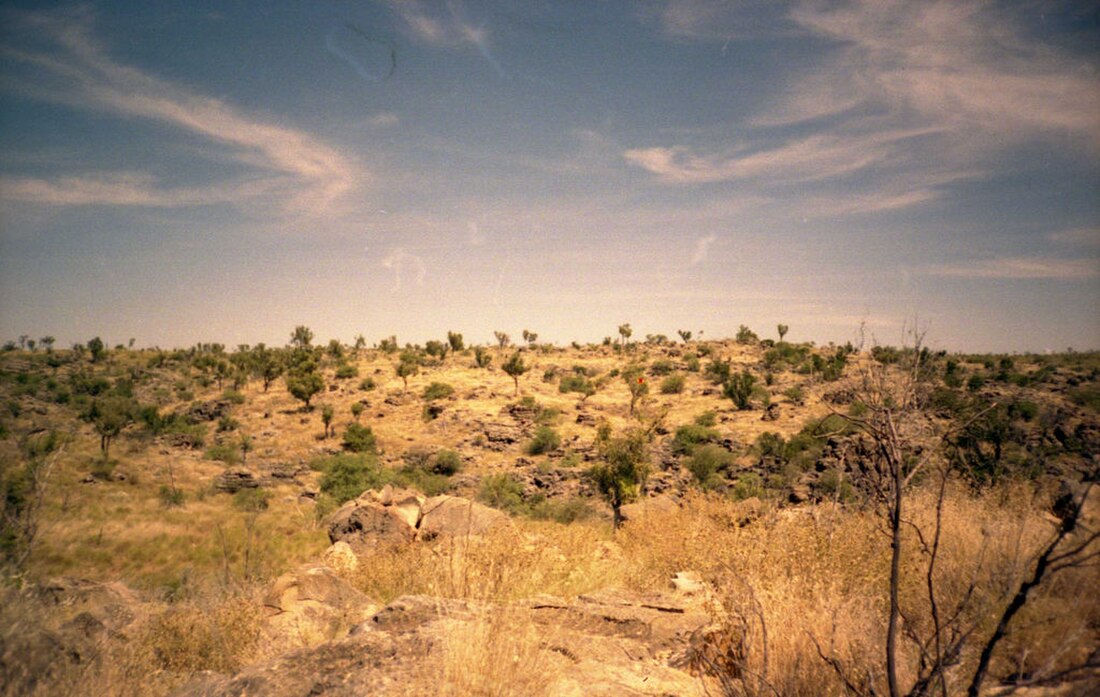Riversleigh World Heritage Area
fossil site in Australia From Wikipedia, the free encyclopedia
Riversleigh in north west Queensland, Australia, is one of the Australian Fossil Mammal Sites listed by UNESCO as a World Heritage Site. The other is the Naracoorte Caves National Park in South Australia.[1] The Riversleigh site is part of the Boodjamulla National Park. The fossil site covers an area of about 100 km².
| UNESCO World Heritage Site | |
|---|---|
 | |
| Location | Gregory, Queensland, Australia |
| Part of | Australian Fossil Mammal Sites (Riversleigh / Naracoorte) |
| Criteria | Natural: (viii), (ix) |
| Reference | 698-001 |
| Inscription | 1994 (18th Session) |
| Area | 10,029 ha (38.72 sq mi) |
| Coordinates | 19°2′S 138°38′E |
The fossils that have been found are the remains of ancient mammals, birds and reptiles of Oligocene and Miocene epochs.[2] The site was listed as a World Heritage site in 1994. The fossils at Riversleigh are rare because they are found in soft freshwater limestone which has not been compressed.[3] This means the animal remains retain their three dimensional shape.
Fossils
Fossils at Riversleigh are found in limestone by lime-rich freshwater pools, and in caves. They are from when the ecosystem was evolving from rich rainforest to semi-arid grassland. Thirty-five fossil bat species have been found at the site, which is the richest in the world. A skull, complete with all its teeth, of a 15 million-year-old monotreme, Obdurodon dicksoni, shows how this Australia group of animals evolved. Fossil ancestors of the extinct thylacine, Thylacinus cynocephalus, have also been found at Riversleigh. In 1993, Nimbadon skulls were found in newly discovered cave.[4] Scientists think this prehistoric marsupial first appeared about 15 million years ago and died out about 12 million years ago, perhaps from the effects of climate change.[5] Other fossils have shown how the koala has changed in response to Australia's change from rainforest to drier eucalypt forests.[6]
Fossils found at Riversleigh
- Ekaltadeta, a carnivorous rat-kangaroo
- Burramys, the Mountain Pygmy Possum
- Nimbacinus, an ancestor of the Thylacine
- Obdurodon, a giant platypus
- Yarala, a tube-nosed bandicoot
- Yalkaparidon, a strange marsupial
- Wakaleo, a marsupial lion
- Priscileo, a marsupial lion
- Nimiokoala, an ancient koala[6]
- Nimbadon, a sheep-like marsupial[4]
- Pengana, a flexible-footed bird of prey
- Menura tyawanoides, a prehistoric lyrebird
- The first fossil record of the Orthonychidae (logrunner) family
References
Other websites
Wikiwand in your browser!
Seamless Wikipedia browsing. On steroids.
Every time you click a link to Wikipedia, Wiktionary or Wikiquote in your browser's search results, it will show the modern Wikiwand interface.
Wikiwand extension is a five stars, simple, with minimum permission required to keep your browsing private, safe and transparent.


